Dorothy Jane Besford was born on 21st September 1915 at 273 Rosalind Street, Ashington, Northumberland. Her parents were John William Besford (always known as Jack) and Agnes Jane Besford (née Hewit). Dora (as she would always be known) was named after her maternal grandmother, Dorothy Jane Hewit (née Ferrow).

Just as her fourth birthday was approaching, Dora’s brother David Besford arrived. He was also born at 273 Rosalind Street.
When Dora was born the First World War had been under way for 14 months. It would continue for a further 38 months. As young as she was, Dora was affected by this as she had recurrent dreams for a number of years in which soldiers were marching past her.

“My memories of early childhood are memories of being very active. I enjoyed doing things and “helping” mother with the housework, baking etc. Mother was tone-deaf and only “sang” when she was ironing – and then it was always hymns. I don’t remember being read to at bedtime although I knew all the nursery rhymes and children’s stories, so how this came about I’m not sure. I was told that I never wanted to go to bed and liked staying up late – a habit that persisted all my life until I reached old age.”
“I can remember going to my Granny Hewit’s and making “scent” in the kitchen sink with rose petals, and also making “tents” in the back yard with clothes horses and old covers. Also “helping” her with the baking. She was very tolerant and had more time to spare than mother. I would occasionally stay overnight and sleep in the same bed as Granda and Granny Hewit.”
“The house in which David and I were born was a three-roomed terrace house overlooking Hirst Park. It had a living room, scullery, and two bedrooms. We had oil lamps because there was no electricity or gas, and they had to be filled with oil, the wicks trimmed, and the glass cleaned regularly. We had a cold water tap in the scullery. We were lucky in that respect because most people in Ashington had to get their water from a tap in the street and water for washing, cooking, bathing, laundry etc. had to be carried from this tap into the house. We had a small front garden and a large back yard which housed a coal house and a flush toilet. The latter was a luxury as most people had “earth closets”. These consisted of a wooden seat with a hole in it and no means of disposing of the “waste”. This horrible job was done by “midden men” who cleaned out the earth closets or “middens” during the night. There was no toilet paper as we know it today. Newspaper was cut into squares which were held together by string and hung in the toilet. In the summer the coal fire still had to be kept going for cooking and hot water, and this, combined with the primitive toilet arrangements, led to swarms of flies. People used to hang “fly papers” in the house to trap them. A fly paper was a long strip with a sticky surface on both sides and the flies got stuck on this. Not a pretty sight.”
Dora used to recount a couple of stories in relation to her brother David when they were both very young. They shared a bed, and Dora woke up one night to find that David had disappeared. She shouted to her parents “I’ve lost David!” only to have him discovered asleep on the floor, having fallen out of bed but not woken up. On another occasion, David woke her up because he had taken a few squares of jelly to bed with him, intending to eat them, but had instead fallen asleep and then woken up to find that they had melted and were sticking to him.
“Heat was provided by a coal fire but there was only the one in the living room so the rest of the house was cold. In the depths of winter there was often ice on the inside of the bedroom windows so you didn’t loiter! Drafts from doors and windows didn’t help. There was no refrigeration so food, especially milk, used to go “off” in the summer. We had gauze covers for meat etc. to keep flies off.”

Dora gave this account of pre-Christmas excursions to Newcastle:
“Every year, as Christmas was approaching, David and I would be taken to Newcastle by our parents. Just going to Newcastle was exciting – seeing tram-cars and large stores such as Lowe and Moorhouse, Moses, Binns, Fenwick’s, Bainbridge’s etc. The Grainger Market was a revelation.”
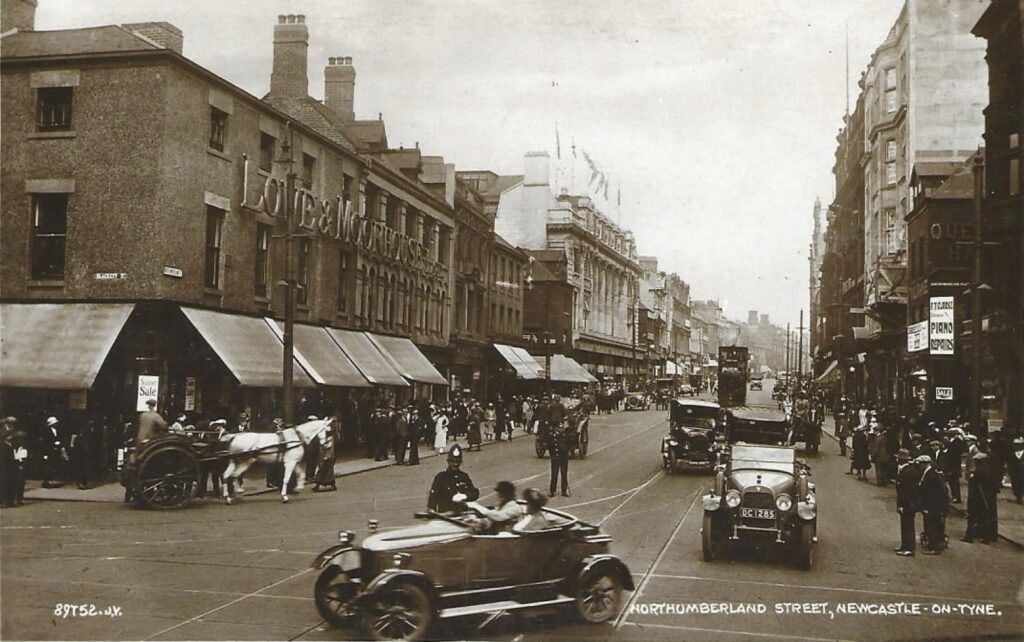
“The journey on the bus took about 50 minutes and since the buses had no heating they were extremely cold in December but we were too excited to notice this. When we had passed through Seaton Burn, David and I used to look out for a particular house in what is now the Brunton Park area. All the houses here were impressive to us since a large proportion of the housing in Ashington was made up of rows and rows of identical colliery houses. The house we were looking out for had two or three stone animals – cats- in various poses on the garage roof. Whichever one of us saw it first would shout out “there it is” and then we were past and it was gone.”
“However the real purpose of our visit to Newcastle was to see the decorations in the big stores. They all had a “Santa’s Grotto” and I think we paid sixpence to go in and talk to Santa, sitting there in all his glory complete with red suit and hat, white beard and beaming smile. After a little chat he would give us each a wrapped present from his sack and enjoin us to be good if we wanted him to visit us on Christmas Eve. After visiting several grottos it was time for tea – in a café! What a treat! We used to go to the Rose Tearooms on Northumberland Road, one of several cafes owned by Carrick’s. Its name was derived from the fact that all the china had little pink roses on a white background. After the meal it was time to go home, clutching our little parcels and worn out with all the excitement.”
“When David and I were young, Christmas Day itself was always spent at home. Some of our relatives would always come for tea later on in the day. We always had a happy time with an abundance of festive food – all prepared at home by my mother. Mother was very fond of practical jokes and would always have several surprises such as a hinged spoon in the sugar basin. We often had a large cotton wool snowman as the centre piece on the table. His hat would be removed and inside was a selection of simple wrapped gifts for us all.”
Dora attended primary school in Ashington. “The classes were very large – 60 pupils. We sat at desks and there was no roaming around. We used slates for any written work. These could be wiped clean and used repeatedly. I liked school and have happy memories of it. My favourite teacher was Miss Aitchison. She was lovely, young and enthusiastic, and always seemed to be smiling. Her father was the station master at Ashington station. I was invited to her home one day – I don’t remember why – and I found they had a very large dog. It was a St. Bernard and it actually swept some of the dishes off the table simply by wagging its tail. I was very impressed and in awe of it.”
Dora became best friends with another girl at primary school. “Jean Lackie was my best friend and remained so through grammar school and later life.”

“When I was 10 and David was 6 we moved to 3 Beech Terrace. The house was still in Ashington but it had electricity and a downstairs bathroom with hot and cold water. The water was heated in a boiler behind the coal fire. We had a long front garden and a back yard with a coal house and toilet.”
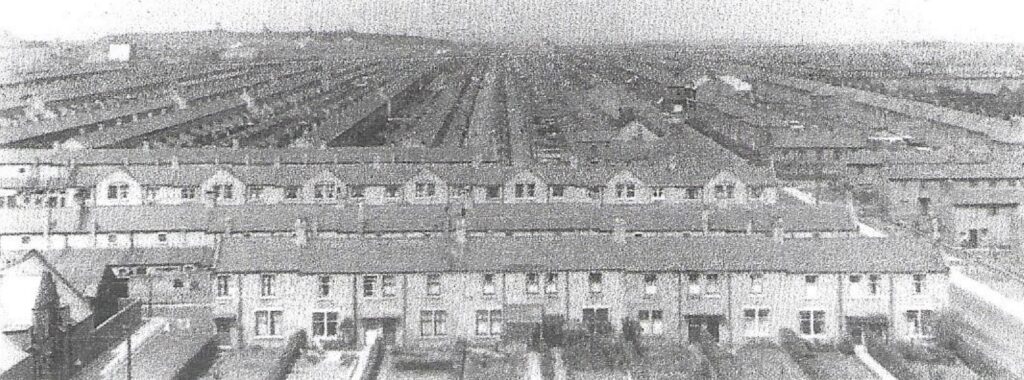
The house at Beech Terrace was originally going to be bought by Jack Besford’s brother David and his wife Rhoda. When they decided to emigrate to Australia, Dora’s parents Jack and Agnes Besford bought the house instead, for the sum of £250.
Dora had this to say about her father Jack Besford:
“He was kind and gentle but also quite firm. He never ever hit me but could show his displeasure simply by talking. His words would leave me feeling very guilty and well aware that I had done wrong. He never swore or used bad language, He never drank alcohol but he did smoke cigarettes. He would treat any scrapes or bumps (which we had quite regularly in childhood) very gently. He was always supportive and encouraging in everything we did. My parents had progressive views, particularly my father. He was very keen on education, not just for us but for everyone. He also believed that girls should be given equal opportunities with boys when it came to education. This was by no means a generally accepted view when I was young. My father realised that education wasn’t merely the means to earning a livelihood but was also the gateway to a fuller and more interesting life.”
Dora went to Bedlington Secondary School at the age of 11. “Jean Lackie and I were the only two in the school to pass the eleven-plus in 1926 so we started at Bedlington together that September and our friendship continued. Most of the time I enjoyed secondary school although I didn’t work particularly hard but did what was required of me. I enjoyed physical activity and was captain of the school hockey team. Jean and I were also first pair on the school tennis team.”
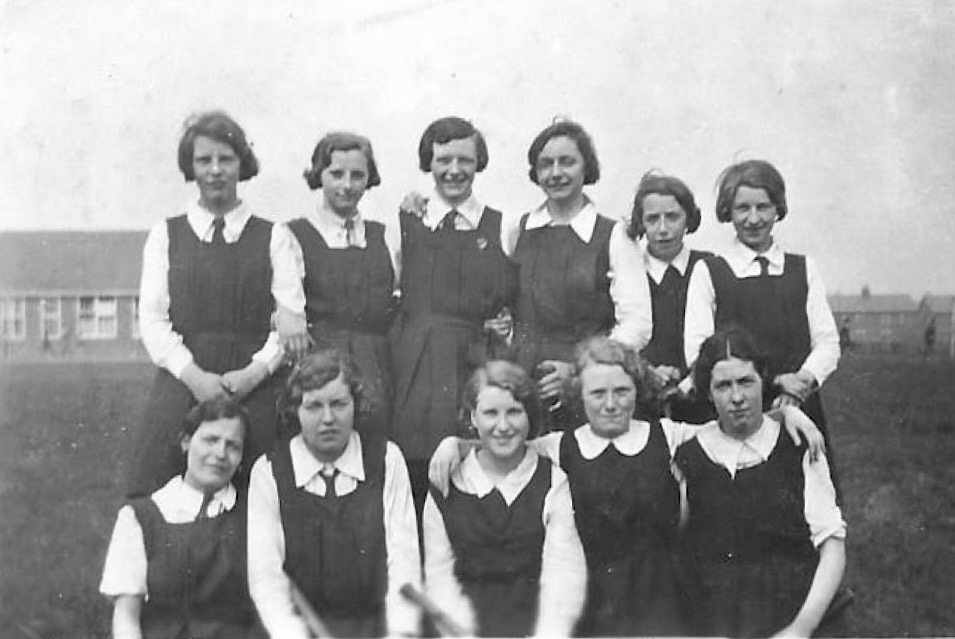


Dora passed her School Certificate in 1931 and after two years in the sixth form was successful in the Durham Higher School Examination in 1933.
When Dora passed her exams at the age of 18 she trained to be a teacher. This, however, was not the first career which she had considered. “I started off by wanting to be in the “store”, i.e. the Co-Op. Several girls left school to work there and of course were earning money so I wanted to do likewise. However father had other ideas! Then I wanted to be a nurse, but again father stepped in and pointed out all the unpleasant things I would have to do and put a damper on that. Then I thought about the Civil Service because by this time Jean was working in the Inland Revenue and travelling to Newcastle every day. However I ended up, much to father’s satisfaction, going to training college and becoming a teacher.”
During her last year at school Dora was able to undertake some uncertificated teaching at schools in Northumberland, all of which were in a more rural setting – one term at Whittenstall, three weeks at Belford, and one week at Edlingham.
“I spent two years at City of Leeds Training College (Leighton Hall) at the end of which I became a certificated teacher. My first teaching post was at Red Row Primary School, about nine miles north of Ashington. My first pay was just over £12 per month. After two years I obtained a post at Hirst North Junior Girls School in Ashington, where I remained until I married in 1948.”
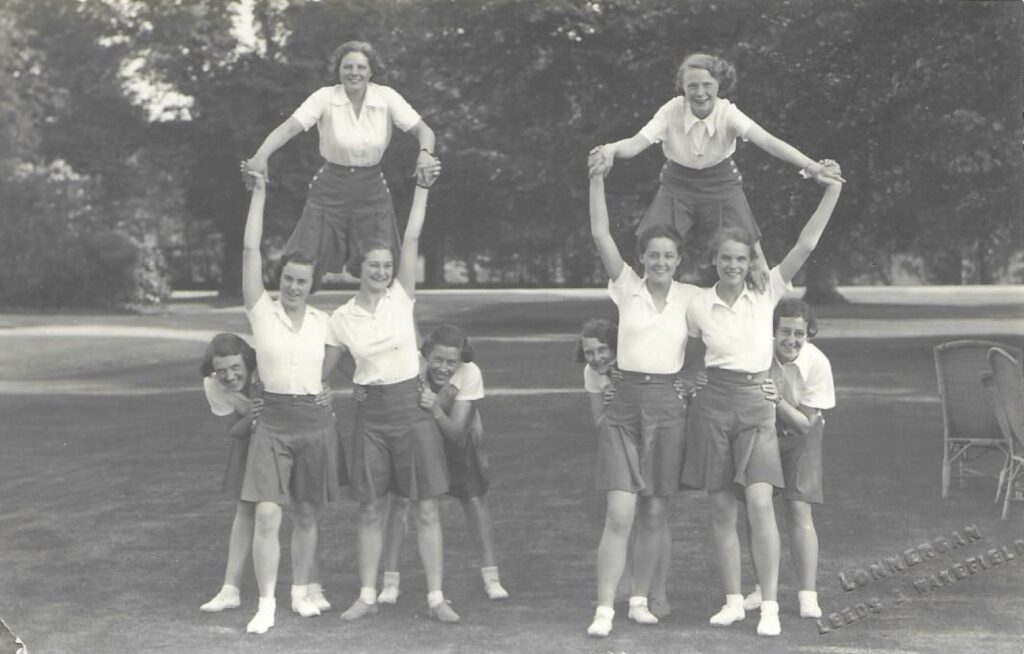
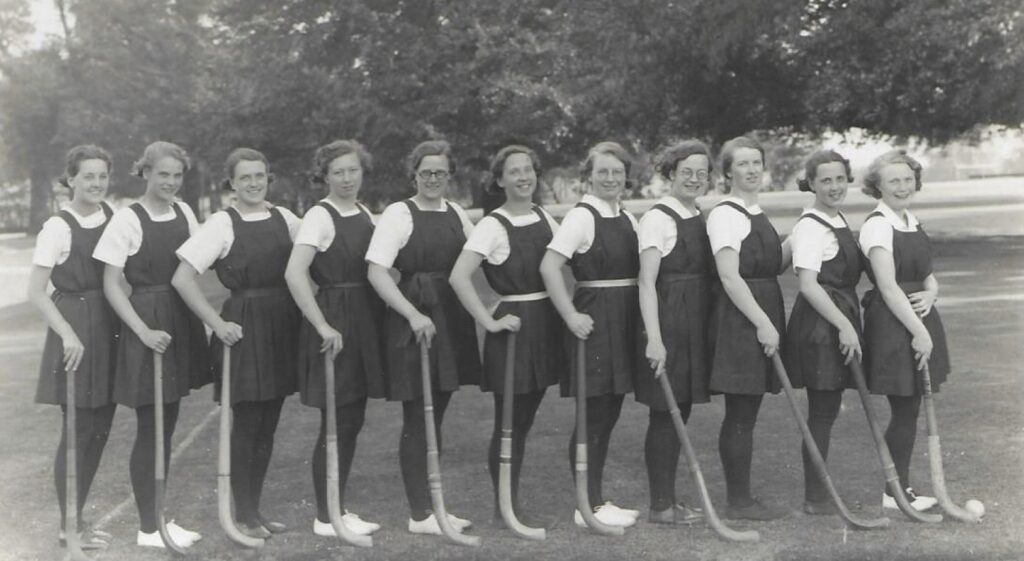
Dora started teaching at Hirst North on 1st April 1938. Her salary was £167- 5 shillings per annum.
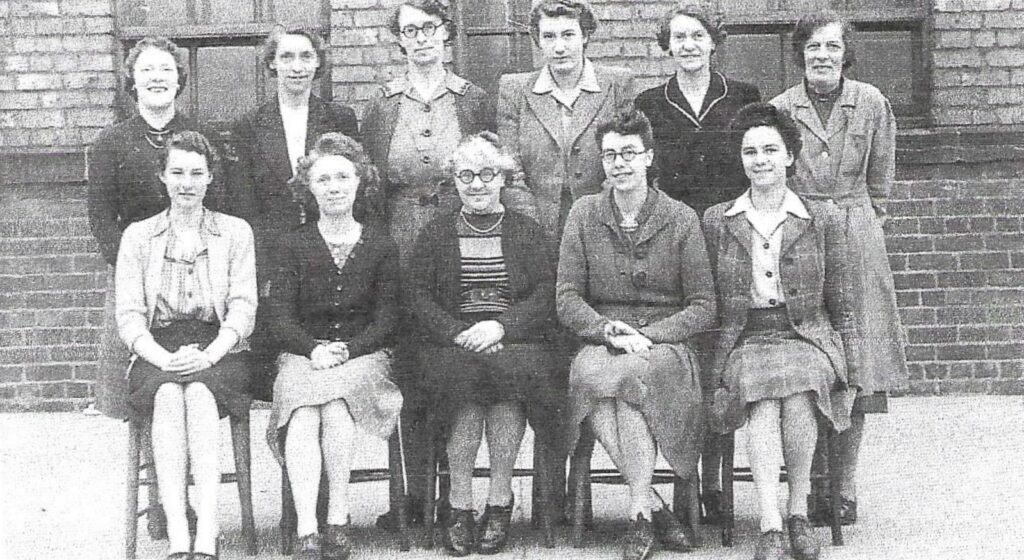
In 1939 the family moved from Ashington to Newcastle when Dora’s father Jack Besford was elected as Financial Secretary of the Northumberland Miners’ Association. They lived in Gosforth at 12 Moorfield, a house owned by the Northumberland Miners’ Association. The 1939 Register, taken at the outbreak of the Second World War, records that, as well as Dora (24), her parents Jack (47) and Agnes (49), and her brother David (20), the household at Moorfield also included Dora and David’s grandfather, Alexander Hewit (76).

Dora remembered Moorfield as follows: “We now had a large house. There was a sitting room, dining room, kitchen and scullery on the ground floor, with three bedrooms and a bathroom on the first floor. There were also two large attics on the second floor, one of which we used as a bedroom. The rooms were spacious with fine quality woodwork. The house had a tiny front and side garden and a back yard.”
Getting to work in Ashington now presented more of a challenge to Dora. On many occasions she ended up rushing downstairs to be handed a cup of tea by her mother and then dashing to catch the bus to Ashington.

When the Second World War broke out in 1939, the staff at Hirst North school had to take turns on fire watch duty overnight. This included Dora.
One of her teaching colleagues would turn out to be particularly significant for Dora’s future life. The teacher in question was Eleanor Hornsby, with whom Dora became friends. One day Eleanor took Dora home to 105 Kenton Lane in Newcastle to meet her family. Eleanor’s brother Henry (always known as Harry) was home on sick leave from the RAF. “We all three arranged to go to the Haymarket cinema in Newcastle and then go for tea afterwards. Harry and I then had dates without Eleanor and our relationship developed from there, though at the time his health was in a parlous state.”
Dora married Harry on 27th July 1948 at St. Hilda’s Parish Church, Jesmond, Newcastle upon Tyne. They went to live at 6 Embassy Gardens, Denton Burn, Newcastle. On 20th March 1951 their son John Hornsby was born at Newcastle General Hospital.

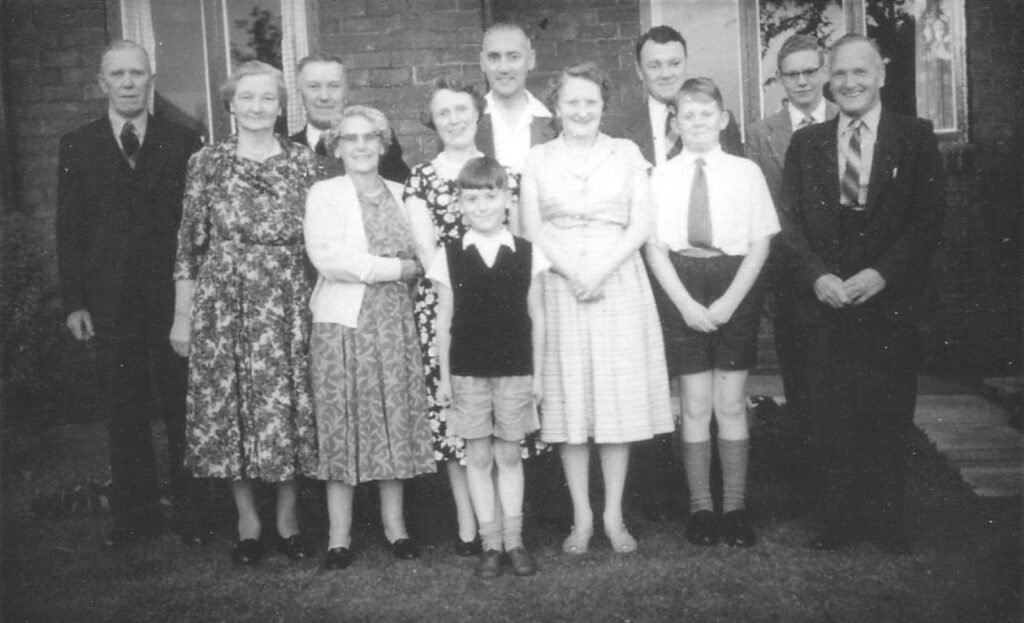
Besford, Dora Hornsby (née Besford), John Hornsby aged 8, Harry Hornsby, Joan Besford (née Matthews), David Besford, Alan Besford, John Besford, David Besford.
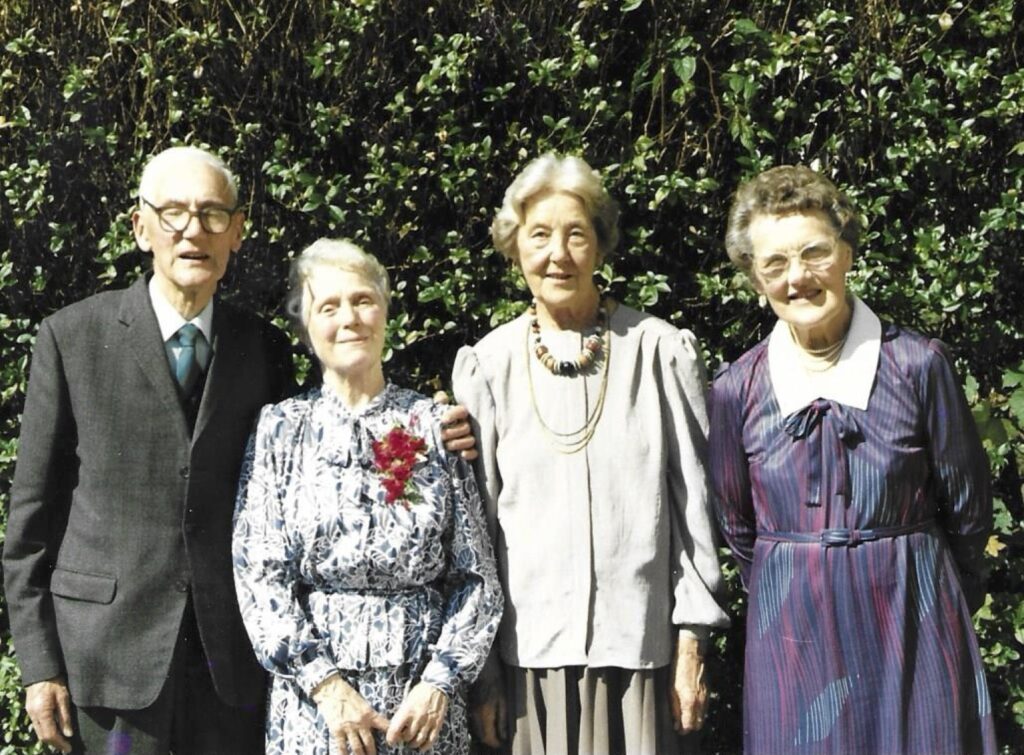



Much of the material in this article was provided by Dora herself via written notes and conversations in the early years of the 21st century.
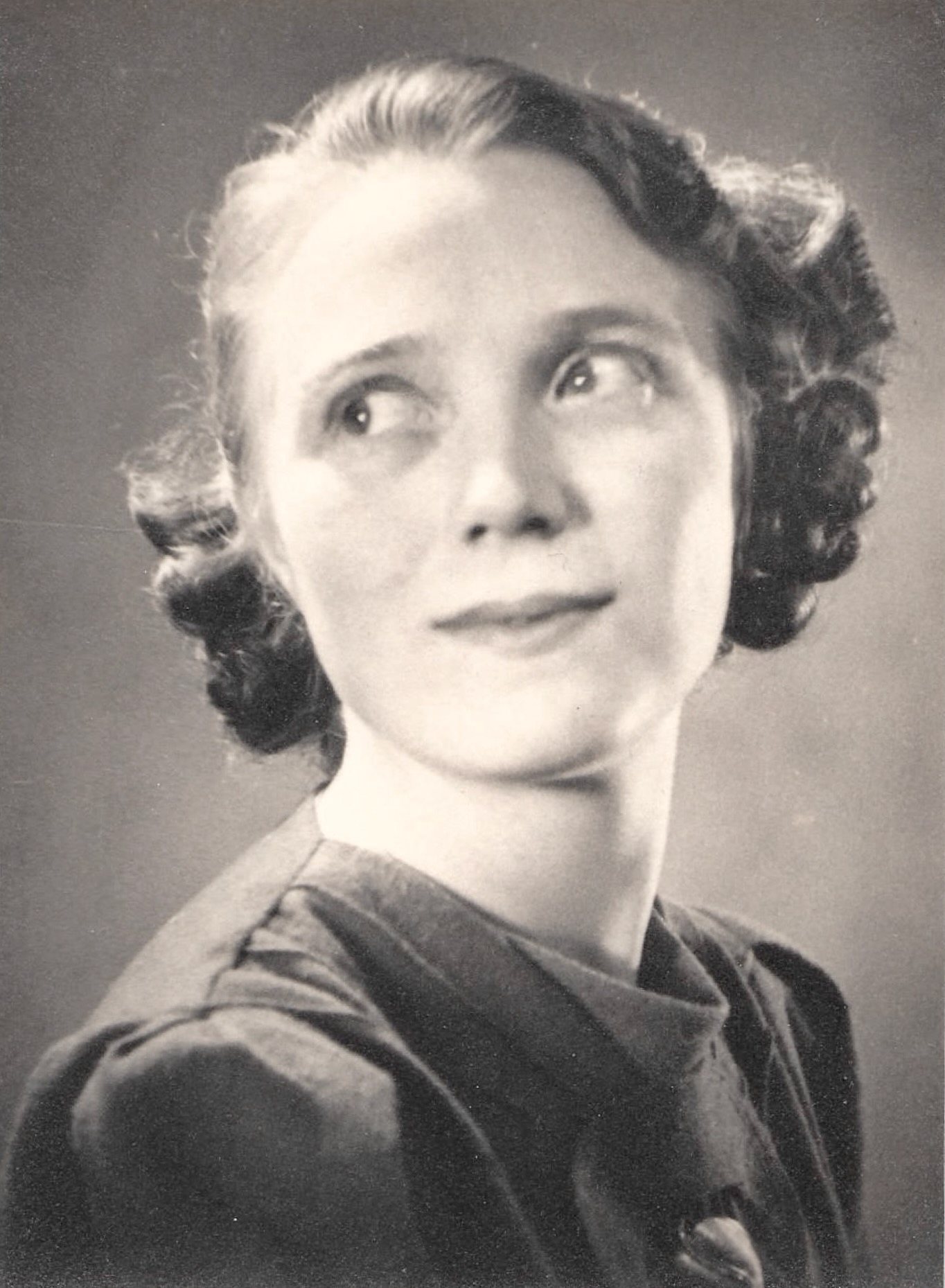
One response to “Dorothy Jane (Dora) Besford (later Hornsby) 1915-2018”
Wonderful read
Thankyou for sharing
Cynthia Gordon